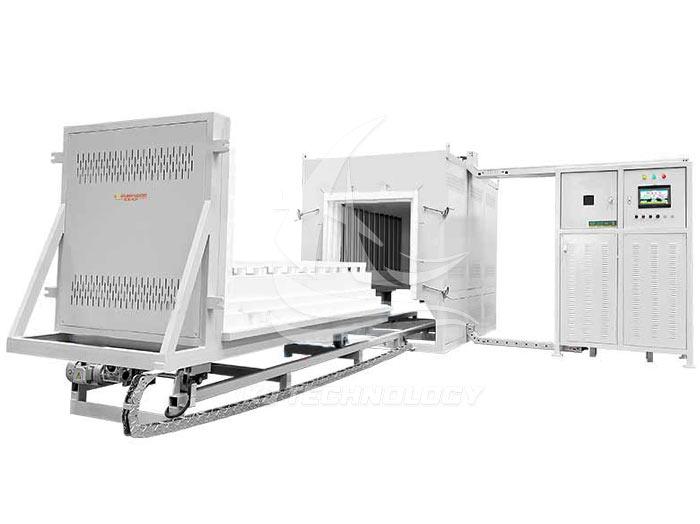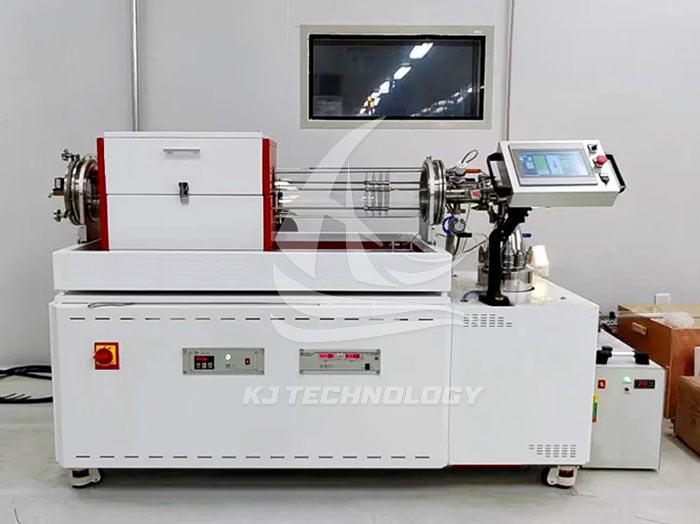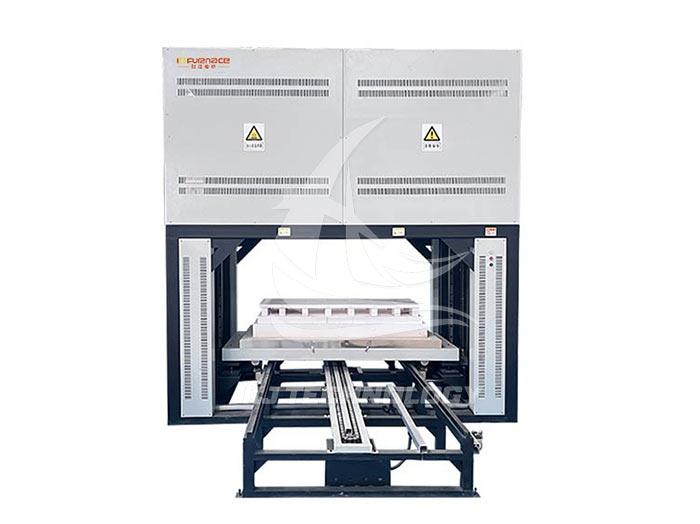How to choose a vertical vacuum hot press furnace?
 09-18-2025 Author: KJ technology
09-18-2025 Author: KJ technology
When choosing a vertical vacuum hot press furnace, a systematic evaluation should be conducted from five dimensions: process requirement matching, core performance parameters, structural and reliability design, functional configuration rationality, and supplier comprehensive strength, as follows:
1. Matching of process requirements
Temperature and vacuum requirements:
Select equipment with appropriate heating temperature range according to the requirements of material sintering or heat treatment temperature. For example, sintering hard alloys typically requires 1400-1600 ℃, while ceramic materials may require temperatures above 2000 ℃.
Confirm the required working vacuum degree (such as 1 × 10 ⁻ ² Pa or higher) and pumping speed for the process, rather than just focusing on the ultimate vacuum degree.
Pressure and pressurization method:
Select the appropriate pressure range and pressurization method (such as unidirectional or bidirectional pressurization) based on material characteristics and process requirements.
For example, when preparing high-density ceramics, higher pressure and bidirectional pressurization may be required to ensure material uniformity.
Work area size and furnace loading capacity:
Select equipment with appropriate effective workspace size and maximum furnace loading capacity based on production batch size and workpiece size.
Ensure that the equipment can meet current and future production needs.
2. Core performance parameters
Temperature control accuracy:
Choose equipment with high temperature control accuracy, such as ≤± 1 ℃, to ensure consistency in material properties.
Confirm whether the equipment adopts advanced temperature control technologies such as thyristor temperature control and PID functional instruments.
Uniformity of furnace temperature:
The uniformity of furnace temperature directly affects key performance such as product hardness and consistency.
Choose equipment with good furnace temperature uniformity, such as within ± 5 ℃.
Vacuum system performance:
Confirm whether the composition of the vacuum system and the pumping speed of the main pump and the front stage pump meet the process requirements.
Choose equipment with low leakage rate and good sealing performance to ensure the stability of the vacuum environment.
Heating elements and materials:
Select appropriate heating element materials (such as graphite, molybdenum wire, etc.) according to the process temperature requirements.
Confirm the lifespan and replacement cost of heating elements to reduce long-term operating costs.
3. Structural and Reliability Design
Furnace structure:
The furnace body structure of the vertical vacuum hot press furnace should be easy to operate and maintain.
The furnace cover can be designed with manual full side opening or automatic lifting bottom discharge to improve production efficiency.
Cooling system:
Confirm whether the equipment is equipped with an effective cooling system, such as water cooling or air cooling.
Choose equipment with fast cooling speed and good cooling uniformity to shorten the production cycle and improve product quality.
Sealing and reliability:
Choose equipment with good sealing to reduce air leakage and improve the stability of the vacuum environment.
Confirm whether the equipment is made of high-quality materials such as corrosion-resistant stainless steel to extend its service life.
4. Reasonable functional configuration
Control system functions:
Choose a control system with monitoring, fault display, recording and other functions to ensure the stability and safety of the process.
Confirm whether the equipment supports PLC touch screen automatic control and retain historical data for analysis of the sintering process.
Security protection function:
Confirm whether the equipment has safety protection functions such as over temperature sound and light alarm and water cut-off sound and light alarm.
Choose equipment with comprehensive security protection functions to reduce production risks.
Scalability and Upgradeability:
Considering the changes and upgrade requirements of future production processes, choose equipment with certain scalability and upgrade capabilities.
Confirm whether the device supports non-standard customization and functional expansion to meet future production needs.
5. Supplier's comprehensive strength
Brand and reputation:
Choose suppliers with good brand and reputation to ensure equipment quality and after-sales service.
Refer to user reviews and usage cases within the industry to understand the actual operation of the equipment.
Technical support and after-sales service:
Confirm whether the supplier provides comprehensive technical support and after-sales service, including equipment installation and commissioning, operation training, maintenance, etc.
Choose suppliers who can provide timely and professional after-sales service to reduce the impact of equipment failures on production.
Price and cost-effectiveness:
On the premise of meeting the process requirements, choose equipment with reasonable prices and high cost-effectiveness.
Taking into account factors such as equipment performance, quality, and after-sales service, conduct a cost-effectiveness evaluation.








